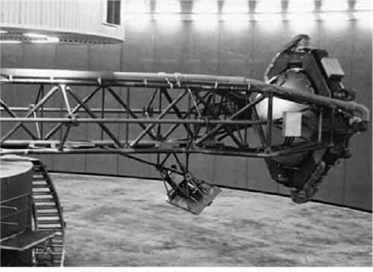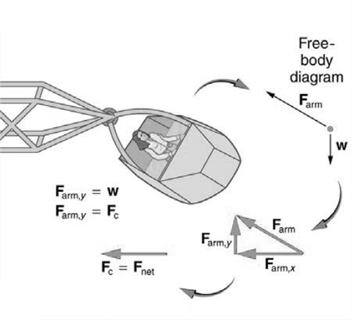A large centrifuge, like the one shown in Figure (a), is used to expose aspiring astronauts to accelerations similar to those experienced in rocket launches and atmospheric re-entries. (a) At what angular velocity is the centripetal acceleration \(10g\) if the rider is \(15.0{\rm{ m}}\) from the centre of rotation? (b) The rider’s cage hangs on a pivot at the end of the arm, allowing it to swing outward during rotation as shown in Figure (b). At what angle \(\theta \) below the horizontal will the cage hang when the centripetal acceleration is \(10g\)? (Hint: The arm supplies centripetal force and supports the weight of the cage. Draw a free body diagram of the forces to see what the angle \(\theta \) should be.)


*Figure (a) NASA centrifuge used to subject trainees to accelerations similar to those experienced in rocket launches and re-entries. (Credit: NASA) (b) Rider in cage showing how the cage pivots outward during rotation. This allows the total force exerted on the rider by the cage to be along its axis at all times.



